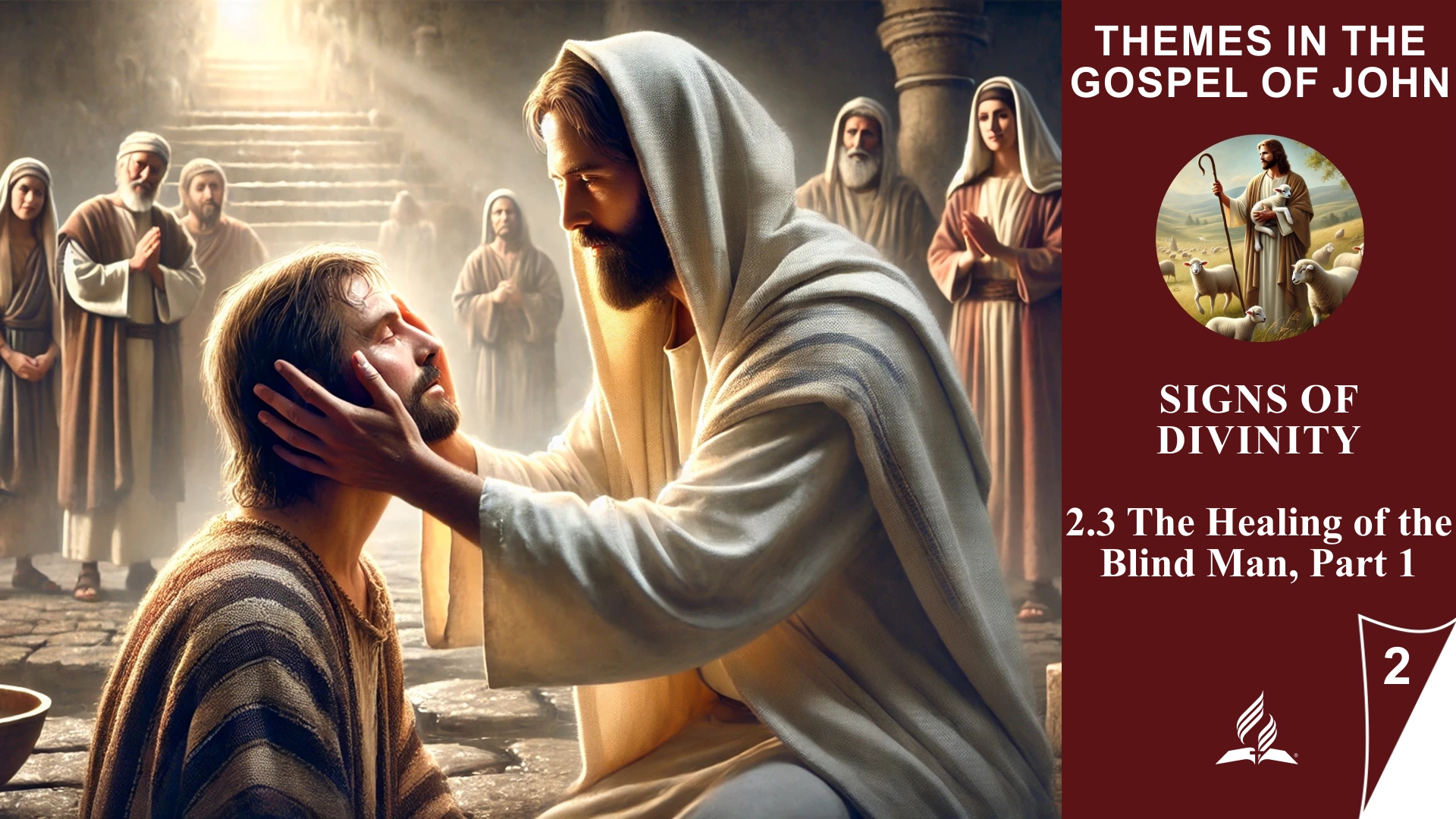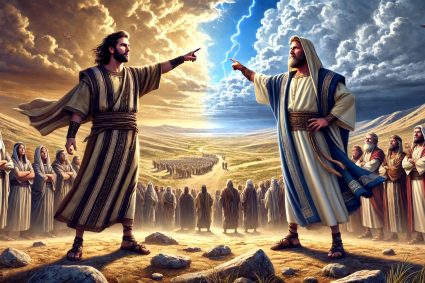


2.3 The Healing of the Blind Man, Part 1
The Revelation of God through the Healing of the Blind Man
Read John 9:1–16. What did the disciples think was the cause of this man’s blindness, and how did Jesus correct their misconception?
In John 9:1–16, we encounter the story of the healing of the man born blind. The disciples suspected that the man’s blindness was a result of personal sin or the sin of his parents. This assumption was based on a widespread belief found in some Old Testament texts, where illness was often seen as a direct punishment for sin (cf. Exodus 20:5; 2 Kings 5:15–27). However, Jesus corrects this false notion by emphasizing that the man’s blindness was not due to sin. Instead, He points out that this situation provides an opportunity for God’s works to be revealed (John 9:3).
Jesus demonstrates that suffering does not always result directly from sin but can also serve to reveal God’s glory and power. He makes this clear by healing the blind man, much like God formed the first humans from the dust of the earth (Genesis 2:7). This hints at God’s creative power, which is also evident in this healing.
The healing itself leads to an extended discussion that increasingly focuses on Jesus’ identity. While the Pharisees rely on the law and tradition, particularly the Sabbath, they become increasingly unclear about who Jesus is. They accuse Him of breaking the Sabbath because He healed on that day. However, others who witnessed the miracle question whether a sinner could perform such signs.
This healing causes a deep division: while the healed man gradually recognizes who Jesus truly is, the religious leaders become increasingly blind to His true identity. The concepts of sin and God’s works, as well as blindness and sight, are central to this episode, highlighting the deeper spiritual message behind the miracle: true sight is not only physical but primarily spiritual, and Jesus brings light to both realms.
What Should This Account Teach Us About the Danger of Being So Blinded by Our Own Convictions and Traditions That We Overlook Important Truths Right in Front of Us?
This account of the healing of the man born blind in John 9 vividly illustrates the danger of clinging so tightly to our own beliefs and traditions that we fail to recognize the truth, even when it is directly before us. The Pharisees were so convinced by their interpretation of the law and Sabbath regulations that they rejected Jesus’ miracle as a “Sabbath violation,” despite it being a clear sign of God’s work. This spiritual blindness prevented them from recognizing Jesus’ true identity.
Key Lessons from This Story:
-
Traditions vs. Truth: The Pharisees were trapped in their religious traditions and rules, placing them above divine revelation. This attitude made them unable to see God’s true work. This story reminds us that while traditions can be useful, they must never overshadow God’s truth. We should remain open to God’s actions, even when they challenge our existing beliefs.
-
Open Eyes for God’s Work: The story shows that it is possible to witness miracles and signs yet remain spiritually blind. The Pharisees saw the miracle but their hearts were closed. This serves as a warning to avoid a rigid, self-righteous attitude that blinds us to God’s revelations.
-
Humility Instead of Pride: The Pharisees acted from a position of pride, confident in their belief that they knew the truth. In contrast, Jesus revealed the truth through humility and compassionate actions. The danger of pride lies in believing we have all the answers, thereby losing the opportunity to learn new things from God.
-
Examination of Our Beliefs: We should always be ready to examine our beliefs and traditions in light of the Bible and God’s truth. Clinging too tightly to beliefs that hinder us from recognizing the truth can make us spiritually “blind.”
Conclusion:
This account warns us to be cautious not to cling so tightly to traditions or convictions that we overlook God’s truth. It requires humility, openness, and the willingness to question our assumptions so that we can clearly recognize God’s work in our lives. Jesus demonstrates that true sight is of a spiritual nature—and that we can only see clearly through Him.
The Healing of the Man Born Blind in John 9 shows a deep connection to our daily lives and faith. This story reveals how easily people can be so blinded by their own beliefs and traditions that they fail to recognize God’s work. Jesus corrects the assumption that the man’s blindness was a punishment for sin and instead shows that suffering can be an opportunity to reveal God’s power and glory.
Connection to Our Life and Faith:
-
Suffering and God’s Work: In our lives, we often tend to see suffering as punishment or consequence for mistakes. However, this story reminds us that God acts amid our suffering and can use every situation to demonstrate His power and grace. In times of pain or challenge, we should remain open to the possibility that God is planning something greater to reveal His glory.
-
Openness to God’s Truth: Like the Pharisees, we can sometimes cling so tightly to our convictions or traditions that we overlook God’s truth. This story challenges us to remain open to God’s actions and be willing to question our beliefs, especially when they prevent us from recognizing the truth. Spiritual blindness can hinder us from clearly seeing God’s work in our lives.
-
Humility Towards God’s Revelation: The Pharisees relied on their religious traditions and dismissed Jesus’ miracles. In our own faith lives, pride and the feeling that we have all the answers can prevent us from understanding God’s deeper plan. This healing reminds us that humility is key to spiritually seeing clearly and learning from God.
Conclusion:
The story of the healing of the man born blind encourages us to continually examine our beliefs in light of God’s truth. It teaches us to seek God’s glory in times of suffering and challenge, and to remain spiritually open. True sight means recognizing God’s work in our lives and allowing Him to guide us.
Remain open to God’s work, even when it challenges your existing beliefs, for true understanding comes through humility and spiritual sight.
(Visited 10 times, 1 visits today)






















